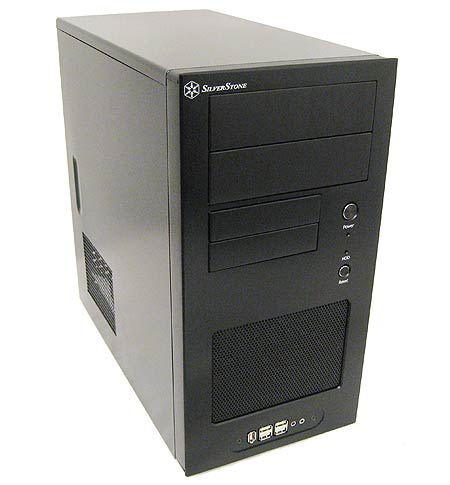System Builder Marathon, May '09: $1,300 Enthusiast PC
Conclusion
What can we conclude from this exercise in building a portable $1,300 enthusiast Micro-ATX system?
First of all, we’ve learned that fitting a high-performance PC into a Micro-ATX box will take a bit more planning and forethought than most enthusiasts are likely used to putting in. Our usual method of choosing the best components for the money and then throwing them together might work well when dealing with full-sized ATX systems, but in this case, the small and airflow-limited case wasn’t nearly as forgiving, causing a lot more heat than we anticipated.
I will note that when we were considering components to include, I did wonder if a no-compromise Micro-ATX gaming system geared for overclocking might be better served with a simple water-cooling setup like the H20-120, which would remove CPU heat inside the case almost entirely and expel it out of a rear-mounted radiator. This is something I would definitely consider in the future if building this type of system again.
Having said that, we still built a first-rate Micro-ATX system that is portable and powerful enough to handle demanding games at 1920x1200 at default clock speeds for $1,300. It includes Intel’s newest CPU technology, 6 GB of triple-channel RAM, and two GeForce GTX 260 cards in SLI. This system is no slouch and cuts through our new gaming benchmarks like a hot knife through butter.
Sure, the $2,500 Micro-ATX system as built by Thomas Soderstrom will likely beat it in games. But will the benefits be worth the extra money? Stay tuned for the final comparison article to find out.
Get Tom's Hardware's best news and in-depth reviews, straight to your inbox.
Don Woligroski was a former senior hardware editor for Tom's Hardware. He has covered a wide range of PC hardware topics, including CPUs, GPUs, system building, and emerging technologies.
-
jtnstnt It looks like you guys have a fetish for silverstone sff cases, and small motherboards. You guys probably like other small things...Reply -
one-shot Was the peak power draw measured from the wall? If so, do you know the efficiency of the PSU to determine the approximate power draw from the components at a given level of output? Overall, great article. I hope my 650Watt PSU with 3 X 19A 12V rails can handle another GTX 260 Core 216.Reply -
serifus if you wanted to go SFF it would be nice to see one done in an LIAN-LI PC-A05NB. at least you still get the full atx boards in those.Reply -
SpadeM ReplyThis system is no slouch and cuts through our new gaming benchmarks like a hot knife through butter.
I wonder how exactly does the selection of components go. I mean it seems that there's some attention given to the forums to be politically correct, but that's kind of it. For $1300 a Phenom 2 + micro AM3 board + 2x4890 in crossfire is a much better solution so .. why not choose the better option?
-
capttylor34 That system looks quite crowded on the inside, and that Dark Knight is big for a regular sized system, I'm actually kind of impressed you managed to fit it in a Micro ATX at all. I suppose as long as it runs stable, theres really no problem. Still think the articles should be titled "Micro System Build-off" just to let people know off the bat what they're about to read.Reply -
IzzyCraft SpadeMI wonder how exactly does the selection of components go. I mean it seems that there's some attention given to the forums to be politically correct, but that's kind of it. For $1300 a Phenom 2 + micro AM3 board + 2x4890 in crossfire is a much better solution so .. why not choose the better option?Reply -
armistitiu I'm tired of seeing I7 920 in every damn "recommended" PC. I'm not saying go AMD but please just try to vary them a bit it's getting stupid. Also try building your own benchmarks or at least change them once in a while.Reply
Btw i\m getting tired of people picking up I7 and saying "because i do heavy CPU tasks" (not necessarily IzzyCraft ) and in fact all they need is a browser,OpenOffice and WoW minimized in the taskbar.
The article is well done no doubts but try using other brands also. It\s starting to sound biased.
-
ohim This article would be great if you could do : what you can buy for 1300 Intel parts and what you can by for 1300 AMD parts ... and put the 2 PCs to compeat to eachother :P it would be a more interesting article than just buy a pc and ... show what ?Reply -
nerrawg Nice slick system this - looks like 2 x 260's is pretty good value at 1920 x 1200 for those that want to max out the settings in the most demanding games. Was wondering however if there is a good technical explanation for the power consumption results because they seem pretty strange?Reply


